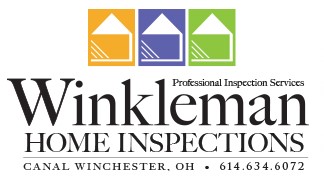Buying/Selling Tips
The following are some common things that are found to be on inspection reports:
- Check all areas at the exteriors for proper caulking.
- Re-secure or replace any damaged siding.
- Make sure the mulch/grass grading is sloped away from your home. Trim back shrubbery.
- Clean out your gutters, and then check all gutter and downspout connections, to assure proper drainage.
- Check all hose spigots for operation without leaks.
- Tighten any loose decking rails/steps etc.
- Replace any burnt out light bulbs.
- Have your dryer vent system cleaned out.
- Check all windows for easy and safe operation.
- Make sure all plumbing drains/traps are full with water and not dried out.
- Change your furnace filter monthly.
- Have updated items such as service checks on the furnace, air conditioner and water heater. (Receipts and service stickers by a local licensed professional are recommended.)
- Tighten or re-secure all interior hand and guard rails.
- Assure easy access (clear path) to areas like crawl space, attic entries, electric panels, mechanicals- water heater, furnace and sump pump. Under cabinetry like kitchens and bathrooms are also preferred to be somewhat cleared out to observe plumbing.
- If you have a chimney, make sure it has been swept or maintained within the past year or so. If connected to a gas fireplace, make sure it also turns on or is on (pilot light) prior to inspection, ready to be tested.
- Make sure all items in the electrical panel; are labeled correctly, prior to listing.
- Make sure that all electrical cover plates are in place and wiring is properly installed/secured.
- Test and refresh any smoke detectors in the home. (If they are older than 10 years, replace prior to listing.)
- Assure working carbon monoxide detector(s) are in place. (As applicable)
- Any loose insulation or vapor barrier plastic in crawls paces and basements are re-secured.
- Check all seals at points of the garage including attic accesses, vehicle garage doors and occupant doors.
- Make sure sensors are in place and at the correct height. (Usually 6” or lower)
- Repair any visible garage walls for damage.
Above all, disclose what you are supposed to and do NOT try to hide anything.
This is not to take place of any legal realtor recommendations, just suggestions or considerations.
- Get a professional home inspection done by an experienced and properly certified inspector. (Winkleman Home Inspections)
- Ask for any service paperwork (receipts, warranties, permits, manuals, current utility bills etc.) that the current owner may have. Most sellers are willing to give these up as they do not need them anymore.
- Look closely at your disclosure.
- Ask for the past inspection(s) if they had one. Things change and different inspectors may find different items. (You still should have your own inspection.)
- Does the home look recently remodeled or “updated”? Though very desirable, be cautious of “open concepts” on older homes. Structural, electrical and mechanicals may have been altered.
- Heavy paint smells or air fresheners are signs of cover up. (Potentially covering pet or mold smells.)
- Why are they moving is a valid question? Look at the neighborhood and surrounding houses? Any issues?
- What type of heating and cooling source is there?
- What is the plumbing source and export system? Well/spring/city supply? Septic/leech or sewer?
- What is the structure? Basement, crawl, slab?
- Are there any detached buildings with electrical or mechanical components that may need inspected?
- No your boundaries. Consider a professional surveyor to mark your property lines.
- Any specific other concerns or testing wanting completed? Termite, radon, lead, asbestos, mold, septic, well etc.?
After/during move in or purchase-
- Upon move in, change all exterior locks. Many people have had that same key prior to you owning the home.
- Know where your main utility controls are at the home. (Electrical, plumbing, gas)
- Re-check all detectors. (Smoke and carbon)
- Create a fire escape plan.
- Purchase new applicable fire extinguishers.
- Follow up with your insurance provider. (This is a great time to take a video of your belongings and make a copy and submit to your insurance carrier for fire/theft reference.)
- Use quality connections for various plumbing and electrical hook up and installations. (Braided water lines for laundry and kitchen supply, quality UL approved dryer vent duct connector, overflow pan for clothing washer, new cords for range and dryer etc.)
- Change/update your new address with all utility, credit, banking and alternate bill providers. School, BMV, post office and voting districts also need to know.
DIY Tips
Free Winter Energy Savings Tips
How to keep your house warm?
Heating Tips for Winter
During the colder months of fall and winter, our fuel and energy costs go through the roof. No more. “Close the door, you are heating up the neighborhood!” OR “Were you born in a barn?” Here are a few suggestions and tips for usage and comfort.
While your doors are closed, check around the door jambs for signs of light. Also, wet your hands and feel around the door for drafts. Include your attached, garage occupant door. Simply add foam or rubber, weather stripping from your local hardware store where applicable.
There are levers in most modern heat systems. They are intended to adjust the airflow from one room to another. You should adjust them as needed from one season to the next and then label with a permanent marker. Summer/Winter.
If you already have a full house system in place, congrats! If you do not, I recommend the small affordable addition. Either way, maintenance for a humidifier is very little. Change the filter pad before every season. Also, if you have a modern humidistat, turn it to test before you turn it on. If you use a humidifier properly, there are many benefits to them including;
- Reduced, static electricity.
- Reduced dry skin.
- Reduced nose bleeds.
- And most important, reduced fuel bills. About a 3-4 degree difference. (Moisture retains temperature longer than air)
As far as traditional thermostat‘s, you can turn them up and down as you please, manually. A more modern version allows a set schedule to run for you. It is based off of your family’s needs and routine. The magic number is 6. (6 degrees of Kevin Bacon, for ease of remembering) If used efficiently, it can save between 10-15% on your yearly energy cost.
Depending on where you live, utility companies vary on which programs you can sign up for. I personally find it beneficial if you can have a once a year budget in place. This is where your fuel bills will be the same for 12 months, every month, even the summer. They then, re-take a look at your usage and adjust for the next year or give you a credit. Inquire with your utility company. Also, if you are an alternate fuel base; propane, oil etc., if allowed, use two holding tanks and fill up one at a time based off of cost, mark what and when you bought it, and fill alternately, always using the cheaper one.
I hope these tips help you out! All suggestions are opinion based and merely used for a possible better usage of the homes comfort. There are no specific, scientific studies or tests performed to back the information. These are practices used by myself and others over vast experiences of life. The recommendations have your best interest in mind.
Fall Home Maintenance
Well hopefully you have turned the clocks back or discovered that you have more time to do things today! As promised here are your Fall Home maintenance tips!
It is that time of year again for some fall home maintenance.
House stuff
- Check your home for settlement.
- Wrap up your grill and outdoor cushions.
- Change your fresh air intake from your heating system to open.
- Check and turn on your humidifier, change the pad.
- Check the settings from your thermostat, make sure it coincides with your current temperatures and timing.
- Replace all smoke and carbon monoxide detector batteries.
- Make sure that your damper or flue exhaust is operable and clear from your heating systems, fireplace’s included.
- If your gas furnace is more than 15 years old, have a proper check up by a licensed HVAC technician for carbon monoxide leaks.
- Make sure that your candles and flashlights are current and operable.
- Double check your fire extinguishers. If they are older than 10 years old, they are no longer considered useful in most aspects.
Car Stuff
- Check your car battery and terminals for proper operation.
- Check the wiper blades and fluid.
- Re stock the emergency kit.
- Rotate the tires before the snow.





